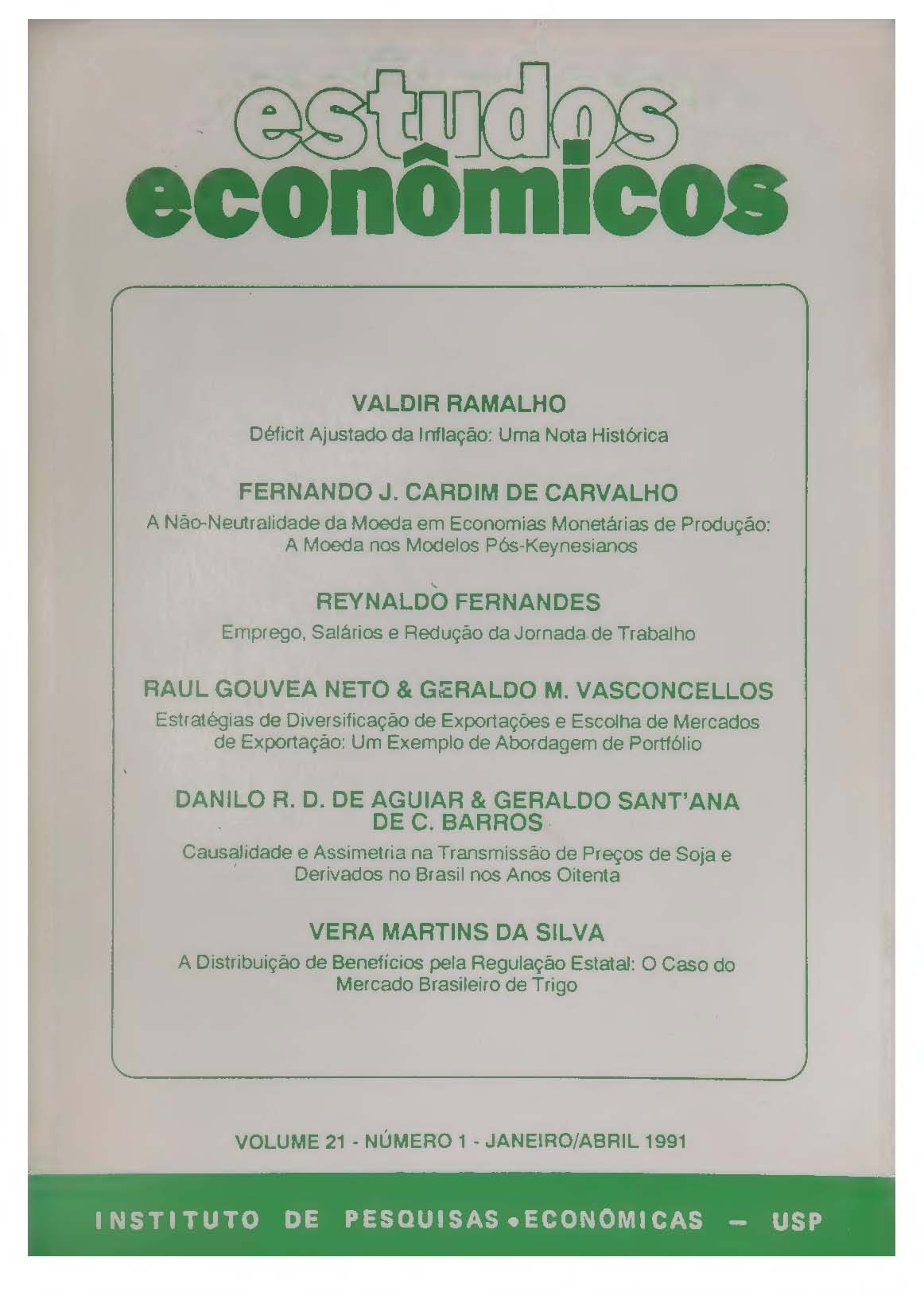Déficit ajustado da inflação: uma nota histórica
Palavras-chave:
Déficit real, Déficit ajustado da inflaçãoResumo
O novo conceito de déficit apareceu no princípio dos anos setenta; a partir do final da década foi empregado nos vários trabalhos citados no texto, quando o nome original de "déficit real" passou a ser substituído pelo atual. A tese paralela de que o déficit ajustado é o indicador adequado de política fiscal surgiu no final dos anos setenta.
Downloads
Referências
BARBER, Clarence. Inflation distortion and the balanced budget. Challenge, 22 (4): 44-47, sept./oct. 1979.
BARRO, Robert. Macroeconomics. New York, John Wiley & Sons, 1984.
BLEJER, Mario & CHU, Ke-Young (eds.). Measurement offiscalimpact: methodological issues. Occasional Paper n® 59, Washington, DC, International Monetary Fund, jun. 1988.
BOSKIN, Michael. Federal government deficits: some myths and realities. American Economic Review, 72 (2): 296-313, may 1982.
BOSSONS, John & DUNCAN, D. The government deficit: too high or too low? Canadian Tax Journal, 37 0): 1"29, jan./feb. 1983.
BOSSONS, John & JUMP, G. The effects of de-indexation and alternative tax increases. Canadian Tax Journal, 29(5): 645-665, sept./oct. 1981.
BUITER, William. Measurement of the public sector deficit and its implications for policy evaluation and design. Staff Papers, 30 (2): 306-349, jun. 1983.
CONKLIN, David & SAYEED, Adil. Overview of the deficit debate, in: CONKLIN, D. & COURCHENE, T. (eds.), Deficits: how big and how bad? Toronto, Ontario, Economic Council, 1983.
CUKIERMAN, Alex & MORTENSEN, Jorgen. Monetary assets and inflation induced distortions of the national accounts conceptual issues and correction ofsectoral income flows in 5 E. E. C. countries. Economic Papers n® 15, Brussels,
Commission of the European Communities, jun. 1983.
EISNER, Robert. Which budget deficit? Some issues of measurement and their implications. American Economic Review, 74 (2): 138-143, may 1984.
EISNER, Robert. How realis the federal deficit? New York, The Free Press, 1986. Budget deficits: rhetoric and reality. Economic Perspectives, 3 (2): 73-93, Spring 1989.
EISNER, Robert & PIEPER, Paul. A new view of the federal debt and budget deficits. American Economic Review, 74 (1): 11-29, mar. 1984.
FISCHER, Stanley & MODIGLIANI, Franco. Towards on understanding of the real effects and costs of inflation. Weltwirtschaftliches Archiv, 114 (4): 810-833, 1978.
HORRIGAN, Brian & PROTOPAPADA^S, Atis. Federal deficits: a faulty gauge of governments Impact on financial markets. Federal Reserve Bank of Philadelphia Business Review, p. 3-16, mar./apr. 1982.
JUMP, Gregory. Interest rates, Inflation expectations and spurious elements in measured real Income and saving. American Economic Review, 70 (5): 990-1004, dec. 1980.
KAY, John (ed.). The 1982 budget. Oxford, Basil Blackwell, 1982.
MILLER, Marcus. Inflation-adjusting the public sector financial deficit. In: KAY (ed.), The 1962 budget. Oxford, Basil Blackwell, 1982.
MINFORD, Patrick. The developments of monetary strategy. In: KAY (ed.), The 1962 budget. Oxford, Basil Blackwell, 1982.
SIEGEL, Jeremy. Inflation Induced distortions in government and private savings statistics. Review ofEconomics and Statistics, 61 (1): 83-90, feb. 1979.
TURNOVSKY, Stephen. On the formulation of continuous time macroeconomic models with asset accumulation. International Economic Review, 18(1): 1-28, feb. 1977.
Downloads
Publicado
Edição
Seção
Licença
Copyright (c) 1991 Valdir Ramalho

Este trabalho está licenciado sob uma licença Creative Commons Attribution-NonCommercial 4.0 International License.
A submissão de artigo autoriza sua publicação e implica o compromisso de que o mesmo material não esteja sendo submetido a outro periódico.
A revista não paga direitos autorais aos autores dos artigos publicados.
O detentor dos direitos autorais da revista é o Departamento de Economia da Faculdade de Economia, Administração, Contabilidade e Atuária da Universidade de São Paulo.




